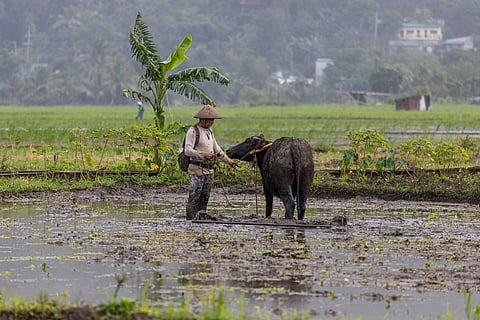
- NEWS
- the EDIT
- COMMENTARY
- BUSINESS
- LIFE
- SHOW
- ACTION
- GLOBAL GOALS
- SNAPS
- DYARYO TIRADA
- MORE

“Some of the worst things imaginable have been done with the best intentions.”
When the Rice Tariffication Law (RTL) was passed in 2019, it carried a noble goal: bring down rice prices and boost farm productivity, supposedly creating a win-win for consumers and farmers. The law replaced strict import quotas with a tariff system, opening the market to foreign rice.
On paper, it sounded promising. In reality, it has been one of the worst blows to Filipino farmers.
Instead of uplifting them, the RTL dragged palay (unhusked rice) prices to record lows. Farmers saw their net income shrink, their livelihoods threatened, and poverty in rural areas deepen. Consumers, meanwhile, didn’t even get the promised relief — rice prices still went up. The supposed cure became a bigger wound.
Fast forward to 2025. The current administration, which inherited the RTL, is now appealing to Congress for amendments, admitting that the law in its present form has failed to protect local farmers and has left the industry at the mercy of global market volatility.
Agriculture Secretary Francisco Tiu-Laurel Jr., speaking before the House Committee on Agriculture and Food chaired by Rep. Wilfrido Mark Enverga, called the RTL a “well-meaning policy” that ended up hurting those it was supposed to help.
“Rice is more than just a staple. It fuels our workforce, sustains our families, and symbolizes food security for over 112 million Filipinos,” he said.
Why the urgency?
Because after the government briefly suspended rice imports in late 2025, farmgate prices showed signs of life, climbing to P16.98–P20.59 per kilo in some provinces. But in other regions, like Cagayan Valley, prices fell as low as P14.43 per kilo. And before the suspension? Palay prices dropped to an unimaginable P8 per kilo — far below production costs.
Tiu-Laurel pointed out that by fully liberalizing rice imports, the RTL stripped the National Food Authority (NFA) of its role in regulating supply and stabilizing prices. Farmers were left exposed, vulnerable to waves of cheap imported rice that drowned the market.
In fact, just last month, palay prices again sank to P8 per kilo in some areas, a devastating level even for the most efficient growers. At the height of the wet season harvest in July 2025, prices hit rock bottom at P6 per kilo — the lowest in years.
Yet the very authors of the RTL, many of them representatives from Nueva Ecija — the so-called Rice Granary of the Philippines — have remained silent.
Rudy San Antonio Bernardo, secretary of Utak Magsasaka Novo Ecijano (UMANE, Inc.), didn’t mince words:
“Your silence is slowly killing the livelihood of those who plant for the nation,” he said in Filipino, lamenting that silence from lawmakers is killing the livelihood of farmers who feed the nation.
He blamed the RTL for the flood of imported rice that crushed local prices, calling it a “man-made calamity.” And he accused its authors of betraying the very farmers they were supposed to represent.
